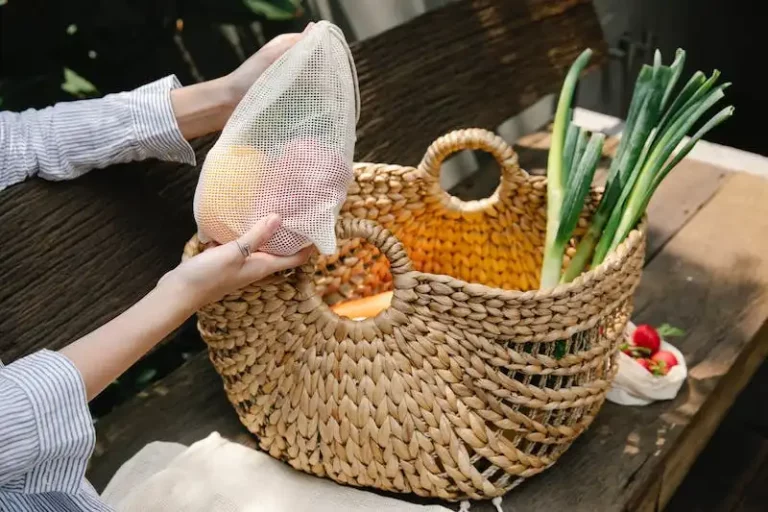Primroses, also known as primulas or primroses veris, are a popular choice for gardeners who want to add early color to their flowerbeds. These charming plants are easy to grow and come in a variety of vibrant hues. If you’re a gardening enthusiast, you’re probably familiar with some common questions about growing primroses. Where should they be planted? When is the best time to plant them? How do you ensure they thrive in their new environment?
In terms of where to plant primroses, it’s important to find a location that offers well-drained soil. Primroses generally prefer environments with moist soil, but they don’t do well in areas that become waterlogged. If you’re unsure whether your soil is suitable for primroses, you can test it by digging a hole and filling it with water. If the water drains away within an hour, the soil is well-drained and primroses will thrive.
As for when to plant primroses, the ideal time is in early spring. Primroses are cold-hardy perennials, so they can withstand frost and cooler temperatures. Planting in early spring gives them enough time to establish their root systems before the hot summer months arrive.
When it comes to the actual planting process, there are a few steps to follow. First, prepare the soil by digging it up and removing any weeds or debris. Add organic matter, such as compost or shredded leaf mulch, to improve the soil’s fertility and drainage. Dig a hole that is slightly larger than the roots of the primrose plant, and place the plant in the hole, making sure that the top of the root ball is level with the soil surface. Fill the hole with soil and gently firm it down around the plant.
After planting, make sure to water the primroses thoroughly to settle the soil and provide moisture for the roots. During the growing season, you can fertilize the plants with a balanced, slow-release fertilizer to promote healthy growth and abundant blooms. Keep an eye out for common pests, such as aphids or slugs, and treat them using organic pest control methods.
Once your primroses are in the ground, they will generally take care of themselves. However, if you notice the plants starting to wilt or the leaves turning yellow, it could be a sign that something is wrong. In this case, check the moisture levels of the soil and adjust your watering accordingly. If the plants are growing in containers, they may need to be repotted to provide more space for their expanding root systems.
Overall, growing primroses is an enjoyable and rewarding experience. These beautiful flowers will brighten up any garden or flowerbed and provide early color before the rest of your plants come into bloom. With a little care and attention, your primroses will flourish and bring joy to your gardening endeavors.
How To Grow Primroses
Primroses are beautiful and versatile flowers that can be grown in a variety of conditions. Here are some tips on how to grow primroses successfully:
- Choose a well-drained area within your garden to plant primrose flowers. Primroses prefer moist but not soggy soil.
- There are many different types of primroses available, ranging in color and size. Select the type that you prefer and that grows well in your climate.
- Plant primroses in early spring or autumn. They prefer cool weather and can withstand light frosts.
- Make sure the soil is prepared before planting. Dig a hole that is deep enough for the root ball of the plant and mix in some compost or well-rotted manure for added nutrients.
- Place the primrose plant in the hole, making sure that the top of the root ball is level with the soil surface. Backfill the hole and gently firm the soil around the plant.
- Water the newly planted primrose thoroughly, then keep the soil moist but not waterlogged. Primroses do not like to sit in wet soil.
- If you are growing primroses in containers, use a well-draining potting mix and make sure the container has drainage holes.
- Fertilize the plants with a balanced, all-purpose fertilizer in early spring and again in mid-summer. Follow the package instructions for application rates.
- Deadhead spent flowers to encourage more blooms and prevent the plants from going to seed. This will also help to keep the plants looking tidy.
- Primroses prefer partial shade to full shade, especially in warmer climates. Avoid placing them in areas with intense afternoon sun.
- Primroses can be somewhat invasive and multiply quickly. If they start to overcrowd, dig them up and divide them in early spring or autumn.
- Some varieties of primroses have poisonous foliage, so make sure to keep them away from children and pets.
- When winter comes, protect primroses with a layer of mulch to insulate the roots and prevent frost damage.
- If you have any questions about growing primroses or need tips specific to your area, consult a local gardening expert or nursery.
By following these basic guidelines, you can enjoy the beauty of primroses in your garden. They are versatile and easy to grow, making them a popular choice for both beginners and experienced gardeners alike.
Please note that primroses are known to be dying plants. They prefer moist conditions and do not tolerate dry or overly wet soil. Regular watering and moisture maintenance are essential for their successful growth.
What are primroses
Primroses, scientifically known as Primula vulgaris, are a popular variety of flowering plants that are easy to grow and come in a wide range of colors. They are native to Europe and Western Asia and have been cultivated for centuries. The word “primula” comes from the Latin word “primus”, meaning “first”, which refers to the early blooming period of these plants.
Primroses have a somewhat tuberous root system and typically grow as small perennials. They are known for their vibrant yellow petals, although there are many other varieties available in different colors. Primroses can be grown in various climates, but they thrive in areas with cool summers and mild winters.
One of the reasons why primroses are so popular is their ease of cultivation. They can be grown from seeds or propagated through division. When planting primroses, it is important to choose a location that provides partial shade and well-drained soil. They can be planted in a hole slightly larger than their root ball and should be watered regularly to keep the soil moist but not waterlogged.
Primroses are low-maintenance plants and are relatively resistant to pests and diseases. Snails and slugs are their main pests, but they can be easily controlled using organic methods. Primroses are also semi-evergreen, meaning their leaves remain on the plant throughout the year.
Once the primroses have finished blooming, it is recommended to lightly fertilize them to promote new growth. If the plants become overcrowded or start dying out, they can be divided and repotted with fresh soil to rejuvenate them. It is important to note that some primula species may be invasive, so it is best to check with local authorities before planting them in natural or protected areas.
Caring for primroses is relatively simple. They should be watered regularly, especially during dry spells, and dead flowers should be removed to encourage continuous blooming. It is also important to protect them from extreme weather conditions, such as frost or heatwaves, by covering them or bringing them indoors. Despite their delicate appearance, primroses are quite tough and can withstand cold temperatures.
It is important to mention that some parts of primroses are lightly toxic if ingested, so it is advisable to keep them away from pets and children. However, the overall toxicity level is low, and they are generally considered safe to have in your home or garden.
In conclusion, primroses are beautiful flowering plants that are easy to grow and bring color to any garden or window sill. They are available in a variety of colors and require basic care to thrive. With the right conditions and proper care, primroses can become a perfect addition to your home or flower beds.
- Easy to grow and bloom
- Come in a variety of colors
- Can be propagated through division
- Tolerant of partial shade
- Relatively resistant to pests and diseases
- Semi-evergreen foliage
- Require regular watering and light fertilization
When to plant primroses
Knowing when to plant primroses is crucial for their successful growth and blooming. Primroses are generally planted in early spring when the soil starts to warm up and become workable. They prefer cool environments and can tolerate temperatures between 50°F and 75°F (10°C to 24°C).
If you live in colder regions, it’s best to wait until the last frost has passed before planting primroses outdoors. The flowers can tolerate a light frost, but a hard freeze can damage or kill them. In warmer climates, you can plant primroses in the fall or winter, as long as the soil is not waterlogged or frozen.
Primroses grow well in partial shade, but they can also tolerate full sun if the soil remains consistently moist. They prefer well-drained soil with a pH level between 6.0 and 7.0. Heavy clay soils should be amended with organic matter to improve drainage. Avoid planting primroses in waterlogged areas or where the soil tends to stay wet for long periods.
When planting primroses, it’s important to give them enough space to grow and multiply. The distance between plants depends on the specific variety and size, but a general guideline is to space them 6 to 12 inches (15 to 30 cm) apart. If planted too closely, they may become crowded, leading to competition for nutrients and decreased overall health.
Before planting, make sure to prepare the soil by removing any weeds or grass that may compete with the primroses for nutrients. You can also mix in some compost or well-rotted manure to improve the soil’s fertility.
In terms of care, primroses require regular watering to keep the soil consistently moist but not waterlogged. During dry periods, it’s important to water them deeply to reach the roots. Mulching around the plants can help retain moisture and prevent weeds.
Keep an eye out for any signs of pests or diseases, as primroses can be susceptible to aphids, slugs, and powdery mildew. If necessary, treat any issues promptly with appropriate solutions or consult gardening resources for more detailed guides on pest control.
It’s also worth noting that some primrose species can be toxic to humans and animals if ingested, so it’s important to exercise caution when planting them in areas accessible to children or pets.
To ensure the long-term health and vigour of your primroses, it’s crucial to divide and replant them every 3 to 4 years. This prevents overcrowding and allows the plants to rejuvenate. The best time to divide primroses is in early spring, just as new growth begins.
In conclusion, if you’re considering growing primroses in your garden, be sure to plant them in early spring when the weather is mild and the soil is workable. Provide them with the right level of shade, well-drained soil, and regular moisture to ensure their optimal growth and blooming. With proper care and a suitable environment, your primroses will reward you with beautiful flowers, adding a touch of color and cheer to your home or garden.

